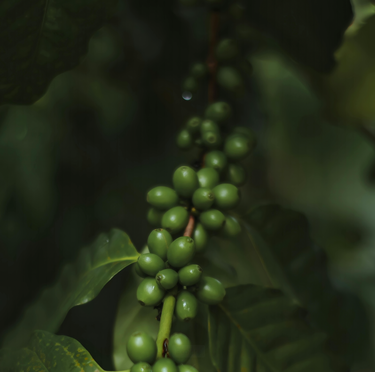As a home roaster, you are likely familiar with green coffee - the unroasted beans that serve as the foundation for every cup of coffee we savour. Although unroasted coffee beans may not possess the rich colour of those sitting in your grinder or on your shelf, they are brimming with potential to create brews that offer incredible flavour and complexity.
The popularity of home roasting coffee has increased due to the pleasure of savouring fresh, flavorful coffee, exploring diverse beans and roasting techniques, perfecting the process, and saving money. However, it is crucial to note that home roasting poses certain hazards, including chaff and smoke production, the necessity of proper ventilation, and the possibility of burns or flaring tempers. Caution must be exercised, and the roasting process should always be carried out in a well-ventilated area.
In this blog post, we will be discussing what green coffee is and how it plays an important role for any home roaster aspiring to create their perfect cup!
Introducing Green Coffee and Home Roasting
To put it simply, green coffee is the original form of coffee that hasn't yet been roasted. It's in its purest form, containing all the natural characteristics of the beans. The flavour and chemical composition of green coffee is determined by several factors, from the climate where it was grown to the variety of bean and processing techniques used.
Where Does Green Coffee Come From?
Green coffee beans can be sourced from around the world. Depending on the desired flavour profile, roasters can explore different bean varieties and growing regions to achieve their perfect cup.
The most popular types of green coffee come from Central and South America, Ethiopia, Kenya, Indonesia, and Vietnam. Each region produces unique coffees with distinct flavour profiles, and exploring the world of green coffee can be an exciting journey for any home roaster.
What are the Different Types of Green Coffee Beans?
There are many different types of coffee beans, all with their own unique flavours and characteristics. The two main types of coffee beans are Arabica and Robusta. Arabica beans are known for their sweeter, more delicate flavour profile, while Robusta is typically bolder and has higher caffeine content.
While both are used in making coffee, the type of bean chosen will largely depend on the desired flavour profile.
How Is Green Coffee Processed?
The processing method will also have an impact on the flavour of the green coffee beans. The two main types of processing are natural and wet. Deciding which processing method is right for you will depend on the desired flavours you want to achieve.
In dry-processed coffee, the cherries are left to fully ripen before being dried in the sun. This method usually yields a more fruity, earthy flavour, as the beans are left intact and absorb more of their natural flavours. Wet-processed coffee on the other hand, is typically washed in water to remove the outer layer of the cherry, resulting in a cleaner flavour profile.
Green Coffee Benefits
Green coffee beans offer a number of benefits to home roasters, from convenience to affordability:
- Convenience: Home roasting allows you to roast your coffee in the comfort of your own home, without the need for expensive equipment.
- Control: By roasting your own beans at home, you have full control over the flavour profile and can adjust it to suit your taste preferences.
- Freshness: Roasting your own beans ensures they are always fresh, as you can roast them in small batches rather than buying pre-roasted coffees which may have been sitting on the shelf for a while.
- Cost Savings: Home roasting is typically much more affordable than buying pre-roasted coffee, and allows you to try out different varieties without breaking the bank.
Green coffee for weight loss
Green coffee is also known to have a number of health benefits, most notably the potential for aiding in weight loss. Chlorogenic acid, which is found in unroasted coffee beans, has been shown to slow down the release of glucose into the bloodstream after eating and can therefore help with weight management.
How to Store Green Coffee Beans Once Roasted
Green coffee beans should be de-gassed after roasting. It is also important to store the beans away from direct light and heat to prevent them from losing flavour or becoming stale, as this can impact the taste of your final cup.
Roasting green coffee beans at home is a rewarding process that allows you to explore different flavours and create the perfect cup for you. With a little bit of practice, anyone can become an at-home barista and master the art of home roasting!
Shop Green Coffee Beans UK
With a range of green coffees from around the world, you can find the perfect beans to suit your taste and create your perfect cup. Try Rave Coffee's green coffee today and experience the full flavour profile that only freshly roasted beans can provide.
Buy coffee beans online today!






